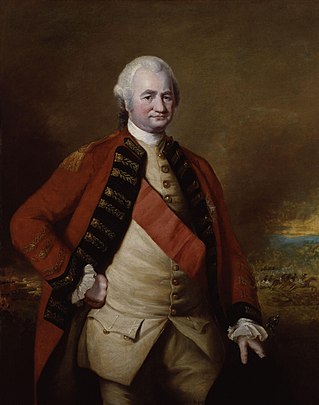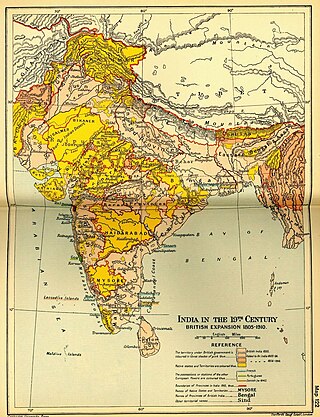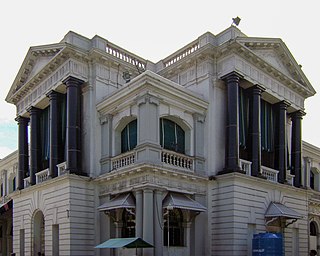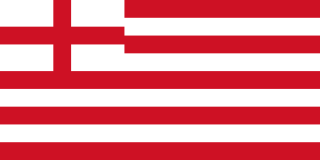
Robert Clive, 1st Baron Clive,, also known as Clive of India, was the first British Governor of the Bengal Presidency. Clive has been widely credited for laying the foundation of the British East India Company (EIC) rule in Bengal. He began as a writer for the EIC in 1744 and established Company rule in Bengal by winning the Battle of Plassey in 1757. In return for supporting the Nawab Mir Jafar as ruler of Bengal, Clive was guaranteed a jagir of £30,000 per year which was the rent the EIC would otherwise pay to the Nawab for their tax-farming concession. When Clive left India in January 1767 he had a fortune of £180,000 which he remitted through the Dutch East India Company.

Company rule in India was the rule of the British East India Company on the Indian subcontinent. This is variously taken to have commenced in 1757, after the Battle of Plassey, when the Nawab of Bengal Siraj ud-Daulah was defeated and replaced with Mir Jafar, who had the support of the East India Company; or in 1765, when the Company was granted the diwani, or the right to collect revenue, in Bengal and Bihar; or in 1773, when the Company abolished local rule (Nizamat) in Bengal and established a capital in Calcutta, appointed its first Governor-General of Fort William, Warren Hastings, and became directly involved in governance. The East India Company significantly expanded its influence throughout the Indian subcontinent after the Anglo-Mysore Wars, Anglo-Maratha Wars, and Anglo-Sikh Wars. Lord William Bentinck became the first Governor General of India in 1834 under the Government of India Act 1833. The Company India ruled until 1858, when, after the Indian Rebellion of 1857 and the Government of India Act 1858, the India Office of the British government assumed the task of directly administering India in the new British Raj.

The Coromandel Coast is the southeastern coastal region of the Indian subcontinent, bounded by the Utkal Plains to the north, the Bay of Bengal to the east, the Kaveri delta to the south, and the Eastern Ghats to the west, extending over an area of about 22,800 square kilometres. The coast has an average elevation of 80 metres and is backed by the Eastern Ghats, a chain of low lying and flat-topped hills.

Fort St. George is a fortress at the coastal city of Chennai, India. Founded in 1639, it was the first English fortress in India. The construction of the fort provided the impetus for further settlements and trading activity, in what was originally an uninhabited land. Thus, it is a feasible contention to say that the city evolved around the fortress. The fort currently houses the Tamil Nadu legislative assembly and other official buildings.

Pulicat or Pazhaverkadu is a historic seashore town in Chennai Metropolitan Area at Thiruvallur District, of Tamil Nadu state, India. It is about 60 kilometres (37 mi) north of Chennai and 3 kilometres (1.9 mi) from Elavur, on the southern periphery of the Pulicat Lake. Pulicat lake is a shallow salt water lagoon which stretches about 60 kilometres (37 mi) along the coast. With lakeside and seashore development as well as several Special Economic Zones (SEZs) including a US$1 billion Medical SEZ, coming up in nearby Elavur, land prices in the area are rising.

The Madras Presidency or Madras Province, officially called the Presidency of Fort St. George until 1937, was an administrative subdivision (province) of British India and later the Dominion of India. At its greatest extent, the presidency included most of southern India, including all of present-day Andhra Pradesh, almost all of Tamil Nadu and parts of Kerala, Karnataka, Odisha and Telangana in the modern day. The city of Madras was the winter capital of the presidency and Ooty was the summer capital.

The Bengal Presidency, officially the Presidency of Fort William in Bengal, later the Bengal Province, was the largest of all three presidencies of British India during Company rule and later a province of India. At the height of its territorial jurisdiction, it covered large parts of what is now South Asia and Southeast Asia. Bengal proper covered the ethno-linguistic region of Bengal. Calcutta, the city which grew around Fort William, was the capital of the Bengal Presidency. For many years, the Governor of Bengal was concurrently the Governor-General of India and Calcutta was the capital of India until 1911.

Chennai, formerly known as Madras, is the capital of the state of Tamil Nadu and is India's fifth largest city. It is located on the Coromandel Coast of the Bay of Bengal. With an estimated population of 12.05 million (2024), the 383-year-old city is the 31st largest metropolitan area in the world.

Fort St David, now in ruins, was a British fort in the town of Cuddalore, a hundred miles south of Chennai on the Coromandel Coast of India. It is located near silver beach without any maintenance. It was named for the patron saint of Wales because the governor of Madras at the time, Elihu Yale, was Welsh.

The provinces of India, earlier presidencies of British India and still earlier, presidency towns, were the administrative divisions of British governance on the Indian subcontinent. Collectively, they have been called British India. In one form or another, they existed between 1612 and 1947, conventionally divided into three historical periods:

Bankipur was an ancient village on the Hugli river located in what is now West Bengal, north of Barrackpore, a little north of Ishapore. It is now a suburb of Barrackpore and is not to be confused with Bankipur (Khejuri), a village located on the coast.

The Carnatic Sultanate was a kingdom in South India between about 1690 and 1855, and was under the legal purview of the Nizam of Hyderabad, until their demise. They initially had their capital at Arcot in the present-day Indian state of Tamil Nadu. Their rule is an important period in the history of the Carnatic and Coromandel Coast regions, in which the Mughal Empire gave way to the rising influence of the Maratha Empire, and later the emergence of the British Raj.
Sir Andrew Cogan, 1st Baronet also known as Andrew Coggan was the first agent of the English East India Company to rule Madras. He was the chief of the Masulipatnam factory when Madras was purchased from Peda Venkata Raya, the last king of the Aravidu dynasty of the Vijayanagara Empire, the capital of which was at Chandragiri. As such Cogan is a significant figure in the history of the English colonial empire.
Francis Day (1605–1673) was an administrator associated with the East India Company. He served as a factor of the company's factory at Masulipatnam from 1632 to 1639. In 1639, he negotiated the purchase of a strip of land south of the Dutch factory at Pulicat from the Raja of Chandragiri, where the town of Madras was built. He served as the second Agent of Madras from 1643 to 1644. Along with Andrew Cogan, he is regarded as the founder of Madras.

Sir William Langhorne, 1st Baronet was the Agent of Madras from January 1670 to 27 January 1678.

Sir Charles Eyre was an administrator of the British East India Company and founder of Fort William, Calcutta. He was a President of Fort William.

British Bencoolen, variously known during its existence as Fort York, Fort Marlborough, Bencoolen, Benkulu, or "the West Coast", was a possession of the British East India Company (EIC) extending nearly 500 miles along the southwestern coast of Sumatra and centered on the area of what is now Bengkulu City. The EIC established a presence there in 1685, and in 1714 it built Fort Marlborough there. The United Kingdom ceded Bencoolen to the Netherlands in 1824.

Bantam Presidency was a presidency established by the British East India Company and based at the Company factory at Bantam in Java. Founded in 1617, the Presidency exercised its authority over all the Company factories in India, including the agencies of Madras, Masulipatnam and Surat. The factors at Bantam were instrumental in founding the colony of Madraspatnam in 1639 with the Fort St. George, which later grew into the modern city of Madras. The Presidency of Bantam was twice downgraded, first in 1630 before being restored in 1634 and for the second time in 1653, when owing to the hostility of Dutch traders, the Presidency was shifted to Madras.
















